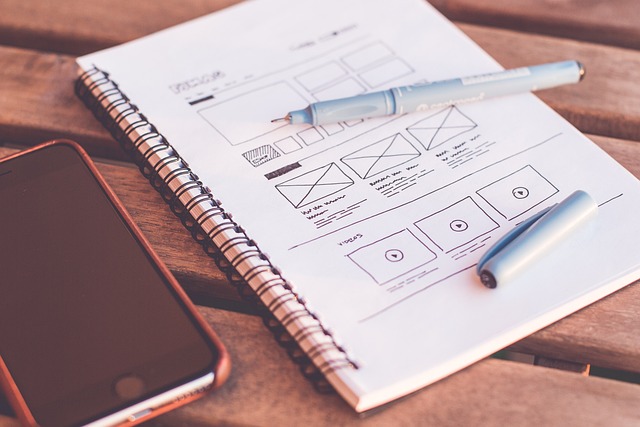Custom web design is a strategic approach to online presence, prioritizing user experience and brand identity. It involves structuring sites for optimal navigation, selecting CMS and design elements that align with branding, and ensuring speed, functionality, and SEO. Well-designed websites engage visitors, boost conversions, and enhance accessibility, attracting organic traffic through optimized content and responsiveness. A successful custom web design balances aesthetics and UX, featuring interactive elements and integrations to foster user engagement. Choosing the right development team is crucial for aligning vision and requirements; ongoing maintenance ensures visual appeal, functionality, and security. Measuring success through KPIs like engagement, conversions, and SEO rankings demonstrates the impact of custom web design on business growth in a competitive digital landscape.
In today’s digital landscape, a professional custom website is no longer a luxury—it’s a necessity. Understanding custom web design involves grasping its fundamental principles and the vast benefits it offers, from enhanced user experience to improved search engine rankings. This article guides you through the process, from basic concepts to best practices for maintenance, ensuring your site delivers maximum value. We’ll explore key elements of successful design, help you choose the right developers, and measure your investment’s return on investment (ROI).
Understanding Custom Web Design: The Basics

Custom web design is more than just creating a website that looks visually appealing; it involves crafting an online presence tailored to your brand’s unique needs and goals. Unlike pre-built templates, which can be generic and lack personalization, custom web design offers a unique, scalable, and user-friendly digital experience. It begins with understanding your target audience, their preferences, and the message you wish to convey.
This process includes defining site structure, choosing an appropriate content management system (CMS), and selecting aesthetics that align with your brand identity. Skilled designers consider not only visual appeal but also functionality, speed, and search engine optimization (SEO) best practices. The result is a website that not only attracts visitors but also engages them, converting curious browsers into loyal customers or clients.
Benefits of a Professional Custom Website

A professional custom website is an invaluable asset for any business or individual in today’s digital era. Unlike generic, off-the-shelf templates, a custom web design offers unparalleled uniqueness and personalization. It allows businesses to showcase their brand identity, values, and services in a visually appealing and user-friendly manner. With tailored features and functionalities, a custom website can directly engage visitors, enhancing the overall user experience.
Custom web design provides numerous benefits, including improved search engine optimization (SEO), increased conversions, and better accessibility. By incorporating specific keywords, optimizing content, and implementing responsive design, professional websites rank higher on search engines, attracting organic traffic. Moreover, custom features like contact forms, e-commerce integrations, or interactive elements encourage user interaction, leading to enhanced customer engagement and higher conversion rates.
Key Elements of Successful Custom Web Design

When crafting a successful custom web design, several key elements come into play. Firstly, user experience (UX) is paramount. A well-designed website should offer seamless navigation, intuitive layouts, and fast loading times to ensure visitors stay engaged. Incorporating responsive design principles ensures your site adapts gracefully across various devices, catering to both desktop users and those on mobile phones or tablets.
Visual appeal is another critical aspect. Custom web design allows for unique aesthetics that reflect a brand’s identity. Effective use of colour, typography, and imagery can create an appealing and memorable experience. Combining these visual elements with clear calls-to-action (CTAs) encourages user interaction and guides them towards desired outcomes, be it making a purchase, subscribing to a newsletter, or contacting the business.
Choosing the Right Custom Web Development Team

When it comes to crafting a professional and effective custom web design, selecting the ideal development team is paramount to your project’s success. It’s not just about finding developers; it’s about partnering with experts who understand your vision and can bring it to life. Look for a team that possesses a proven track record in creating high-performing, user-friendly websites tailored to specific business needs.
Research their portfolio, read client testimonials, and assess their communication style. The best teams will engage in open dialogue, ensuring your ideas are understood and incorporated while offering valuable insights based on their expertise. A collaborative approach ensures the final product aligns with your brand identity and objectives, setting your website apart in a competitive online landscape.
Best Practices for Maintaining Your Custom Site

Maintaining a custom web design is crucial for ensuring your site remains visually appealing, user-friendly, and functional over time. Here are some best practices to keep in mind. Regular updates are essential to address security vulnerabilities and keep your website compatible with the latest technologies and browser versions. Additionally, regularly backing up your site ensures that you can quickly restore it in case of any data loss or cybersecurity incidents.
Content refresh is another vital aspect. High-quality, relevant content not only engages visitors but also improves search engine optimization (SEO). Regularly review and update your pages with fresh content, optimize meta tags and descriptions, and ensure your site remains optimized for both users and search engines. This continuous maintenance ensures your custom web design stays competitive and effective in the dynamic digital landscape.
Measuring Success and ROI of Custom Web Design

Measuring the success and return on investment (ROI) of a custom web design is crucial for any business looking to make informed decisions about their online presence. It involves more than just aesthetic appeal; it’s about achieving specific goals that align with your brand objectives. By setting clear KPIs (key performance indicators), you can track metrics such as increased user engagement, higher conversion rates, and improved search engine rankings. Custom web design succeeds when it enhances user experience, boosts customer satisfaction, and translates into tangible business growth.
The effectiveness of a custom web design is also evaluated by analyzing key aspects like website traffic, bounce rates, time spent on site, and the overall quality of leads generated. These insights help in understanding which design elements and features are driving positive outcomes, allowing for data-driven adjustments to maximize ROI. In today’s digital era, a successful custom web design is not just about creating an attractive interface; it’s about delivering measurable results that contribute to your business’s bottom line.
